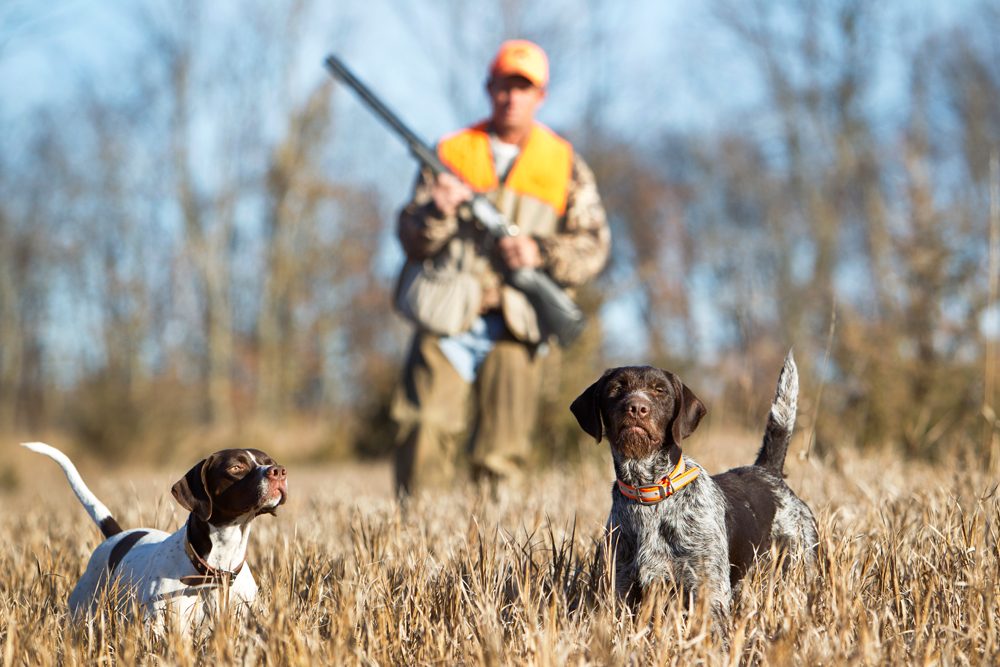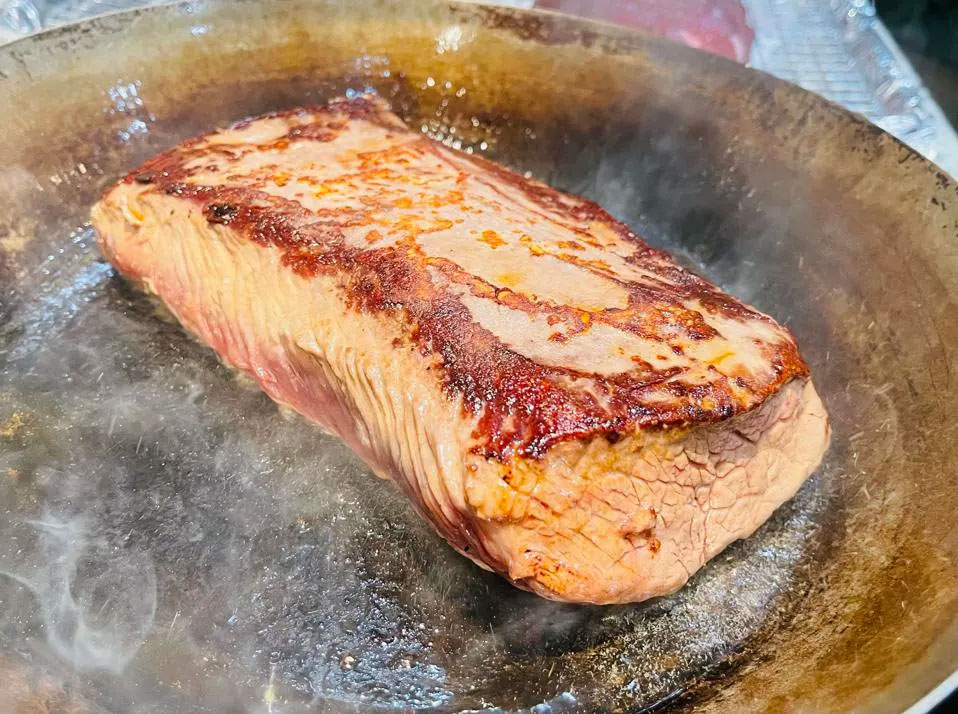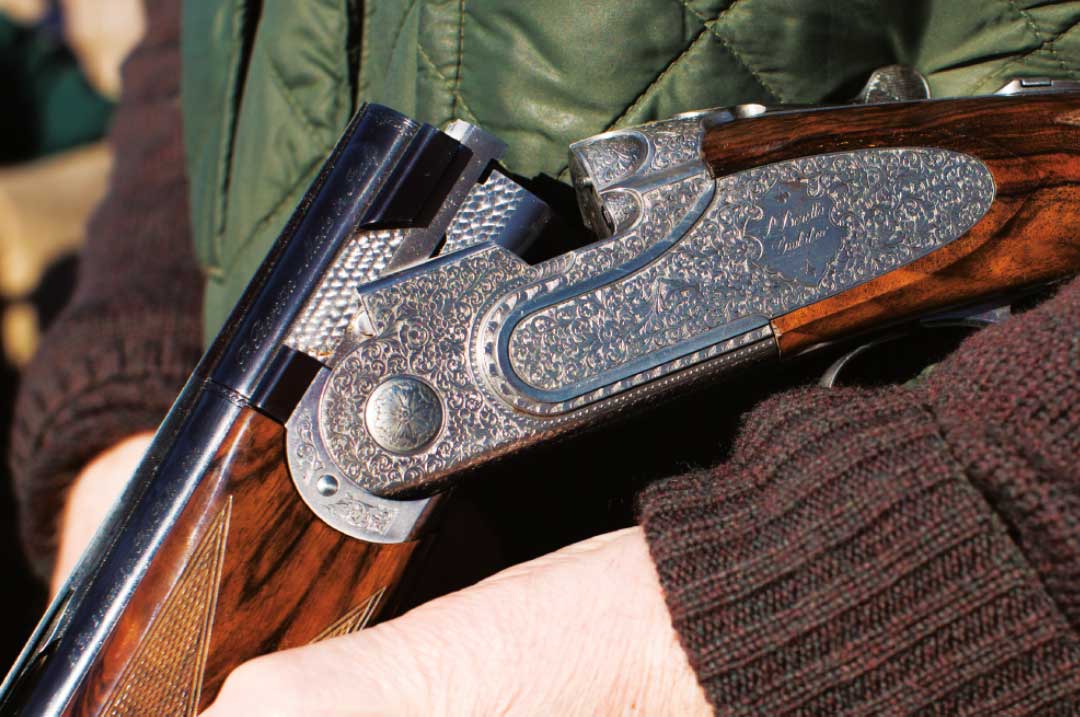Everything about the peregrine falcon is spectacular — even in death.
“One of the penalties of an ecological education is that one lives alone in a world of wounds.” – Aldo Leopold
Early one evening toward the end of April, my English setter, Tina, and I were on the homeward leg of a long, leisurely walk. It was exactly one week since an apocalyptic “weather event” had crushed Green Bay beneath two feet of snow; my wife Joan and I had watched for hours, disbelieving, as the world beyond our windows went white. Now, while Spring seemed finally to have sprung—we’d been enjoying a run of sunny, seasonably warm days—snow still lay drifted against the northern exposures and windrowed dirtily along the curbs.
Tina and I had followed our usual route, a route that takes us to the north-flowing Fox River and the paved recreational trail that parallels its east bank. The Fox is a couple hundred yards wide at this point, and in the beveled light its surface, ruffled by a gentle southerly breeze, was a swirl of fiery orange and deep, enameled blue. A few walleye boats bobbed about, gilded by the low sun and somehow made eminent by that quality of illumination. Overhead wheeled squadrons of pelicans, ungainly yet elegant, their movements synchronized as precisely as watches.
We’d done our out-and-back on the trail and come to the only road we have to cross: Riverside Drive, a four-lane that’s one of the main north-south arteries in this part of the city. Glancing left to check the southbound traffic, my eye was caught by a dark, roughly elliptical object lying on the sidewalk about 40 feet away. My heart sank. It was a bird, one that had clearly been struck by a vehicle and killed.
From the size and slate-gray coloration I assumed it was a Cooper’s hawk. They’re common in our suburban neighborhood— Joan and I see them frequently, hurtling through the airspace of our back yard like bolts of feathered lightning—and because their M.O. is to fly low they’re at distressingly high risk of getting clobbered by cars. This wouldn’t be the first Cooper’s to fall victim to the traffic on Riverside Drive; sadly, I’d found several such casualties over the years.
I wanted to be sure of the I.D., though, so I heeled up Tina to take a closer look…and within a few steps realized, to my horror, that my assumption was wrong. The bird wasn’t a Cooper’s hawk.
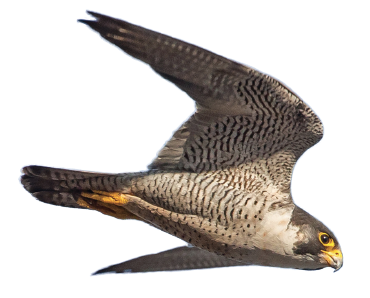 It was a peregrine falcon.
It was a peregrine falcon.
The bird was lying breast down, its torso canted slightly towards me and its head to my left. The instant I glimpsed the “ear flap” marking that is the peregrine’s unmistakable signature, something shattered inside me. “Oh no!” I heard myself cry as I quickened my pace. “Oh no!”
Then, all doubt falling away as I stood above the lifeless form— its rapier wings folded forever, its great yellow talons clenched in fist-like claws of death—I sank to the sidewalk, cradled my head in my hands, and wept. If a passing motorist had been moved to call 911, his report might have been something like “There’s a madman with a brown-spotted dog crying over a bird…”
The falcon’s size told me it was a female, and knowing there was every chance she’d been on the nest and incubating eggs only plunged me deeper into an abyss of despair. It was altogether likely, in fact, that I’d seen this bird. For the past decade peregrines have nested on a certain bridge just a couple miles from my home, and they’re liable to show up in that vicinity at any time of year. I couldn’t begin to count the number of times I’ve seen them while crossing the bridge in my car—many dozens, at least—but the sight of one of these magnificent predators, whether scissoring the sky above the river or perched heraldically atop some feature of the built environment, never grows old. It never fails to thrill— especially for those of us of an age to remember when the sight of a peregrine falcon anywhere in the United States was a headline-worthy event.
When the Endangered Species Act was signed into law in 1973 (by Richard Nixon, lest anyone forget), it had been more than a decade since peregrine falcons had nested successfully east of the Mississippi River. The chief culprit was the class of pesticides headed by DDT, the toxic residue of which becomes increasingly concentrated in the tissues of affected species as it rises through the food chain. Biomagnification, this insidious process is called.
In apex predators like the peregrine (also the bald eagle), the concentration of DDT grew so high that it caused the females to lay eggs with tissue-thin shells—shells that invariably broke beneath the weight of the incubating adults. With no young being produced, the peregrine population was like a jet that had burned up all its fuel. The only possible outcome was to crash.
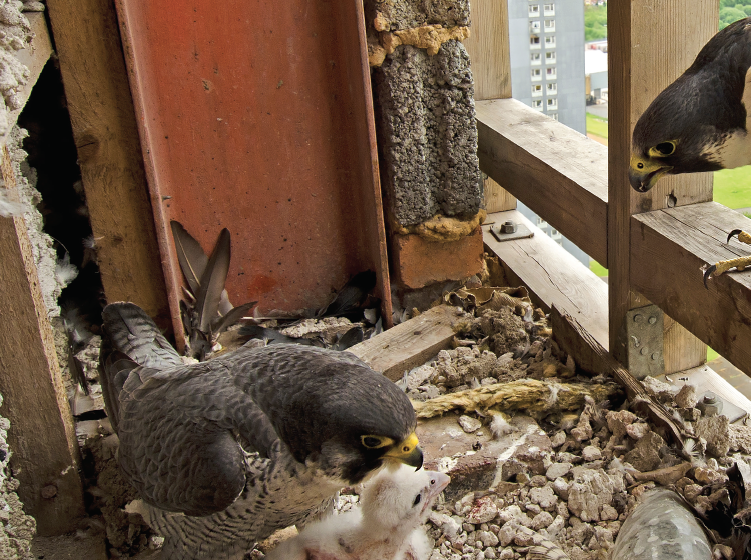
Steven Mcgrath, a wildlife photographer in Scotland, captured this remarkable scene of a peregrine family nesting high in a Glasgow skyscraper.
It might have burned, too, the story ending in ashes, were it not for the efforts of Dr. Tom Cade of Cornell University’s Laboratory of Ornithology and the non-profit offshoot he established in 1970, The Peregrine Fund. Working with missionary zeal, Cade and his collaborators—Jim Weaver, most prominently, but there were many others—perfected a technique for breeding falcons in captivity and rearing the young under controlled conditions until they could be “hacked” (released) into the wild. The banning of DDT in 1972 and the subsequent passage of the Endangered Species Act had opened a path for the species’ restoration, but it was the tireless work of Cade, Weaver and The Peregrine Fund that pushed it across the finish line.
As a footnote to this history, it’s important to remember that most of the birds used for the breeding program came from falconers. Indeed, had the falconry community not maintained this precious genetic pool while the species was declining in the wild, the already steep climb facing the peregrine’s recovery would have been immeasurably steeper—if it had been surmountable at all.
In 1980, the first wild-hatched peregrine eyases (chicks) produced by captive-bred parents anywhere in the world pipped out of their shells in a nest at the Barnegat National Wildlife Refuge in New Jersey. Two other successful nests were documented in the East that year as well—the first in more than two decades.
From there, as befits this bird capable of exceeding 150 mph in a stoop (making it easily the fastest bird on the planet), the pace of the peregrine’s recovery was dizzyingly swift. The game-changer was the discovery that the species thrives in urban environments, which among other attractions offer tall buildings for nesting, abundant prey, a comparative lack of predators and reliable thermal updrafts. In August, 1999, barely a quarter-century after the recovery program’s inception, Secretary of the Interior Bruce Babbitt announced that the peregrine falcon had been removed from the Endangered Species list.
It’s a spectacular success story—but then, pretty much everything about the peregrine is spectacular. Throughout the course of human history, no bird, and perhaps no species, has captured and enthralled our imagination the way the peregrine has. The symbol and embodiment of all that is fierce and wild and free—the very name peregrine derives from the Latin for “wanderer”—it’s an object of enduring wonder, near-idolatrous veneration and, as the classical bird of falconry, desire that can border on obsession.
As Roger Tory Peterson observed in one of the finest, most evocative passages he ever wrote, “Man has emerged from the shadows of antiquity with a peregrine on his wrist. Its dispassionate brown eyes…have been witness to the struggle for civilization, from the squalid tents on the steppes of Asia thousands of years ago to the marbled halls of European kings.”
And yet, for all this shared history, there is something gloriously unknowable and unattainable about the peregrine. Its soul is an impenetrable mystery. The bird can be “manned,” to use the language of falconry, but it cannot be possessed. A line from Leonard Cohen’s hauntingly beautiful “Joan of Arc” comes to mind: “I love your solitude, and I love your pride…” All of which helps explain why I responded so emotionally when I found the dead peregrine, why it was so desperately hard for me to come to terms with it. Of course a dead peregrine is not something you ever expect to find. It is a thing so unimaginably beyond the realm of common experience that it was as if I’d stumbled across the broken body of Icarus, fallen after flying too close to the sun.
There was the heartbreaking banality of it, too, this most lordly and iconic of birds reduced to mere roadkill, its seething lifeforce extinguished in a random instant. What remained was an empty vessel, and I had no more inclination to examine it closely— beyond determining that she was, indeed, banded—than I’d had to linger over the body of the dog of mine, also a setter, that I’d found dead on the shoulder of a rural highway some 30 years before. I’d wrapped her in an old blanket, buried her and grieved—both for what she’d been, and for what she would never have the chance to be.
I wasn’t about to leave the peregrine where she lay, though— that would have been to dishonor her—and I felt an obligation, both moral and scientific, to report the band. So I picked her up by those huge yellow feet, saddened all over again to feel her solid weight and realize what that implied: that she’d been a skilled, successful huntress, a bird who would have provided well for her offspring and given them a genetic leg-up in the struggle for survival.
 That’s when, as if to prove the point, I noticed the female blue-winged teal lying dead a few feet away, half-hidden behind a ragged mound of snow. My God, I thought, shaking my head as the fateful chain of events became clear. The peregrine had been hunting the ponded fields a few miles east of town (the likeliest nearby place to find puddle ducks at this time of year), made a kill, and was carrying it back to her territory on the river when she got clipped, probably by a semi-trailer, as she crossed the four-lane from east to west. The impact separated her from the teal; their momentum carried them both, dead in the air, to where they finally fell.
That’s when, as if to prove the point, I noticed the female blue-winged teal lying dead a few feet away, half-hidden behind a ragged mound of snow. My God, I thought, shaking my head as the fateful chain of events became clear. The peregrine had been hunting the ponded fields a few miles east of town (the likeliest nearby place to find puddle ducks at this time of year), made a kill, and was carrying it back to her territory on the river when she got clipped, probably by a semi-trailer, as she crossed the four-lane from east to west. The impact separated her from the teal; their momentum carried them both, dead in the air, to where they finally fell.
I could see it all too vividly in my mind’s eye. Damn…
Was she flying just a fraction lower than normal because of the weight of the duck and the length of the flight? I ran this scenario past a falconer friend a few days later and he found it persuasive, especially in light of the information provided when I went online to report the band: that she’d been banded as a nestling two years earlier at the Milwaukee County power plant in Wauwatosa, one of Milwaukee’s western suburbs.
“An urban peregrine that’s lived to be two years old,” my friend opined, “has learned how to avoid traffic.”
There’s no way to know, of course, but if this explanation is correct what killed the peregrine, ultimately, was the very prowess, even genius, that defined her. The Aeschylean irony of that is almost too terrible to contemplate…and yet, as I sought to make some sense of the bird’s death, it occurred to me that it was a tragedy made possible by triumph. Forty years ago the peregrine was on the Endangered Species list; today it’s more abundant in the eastern United States than it’s ever been, and the epicenters of that abundance are urban areas. Cities, in other words, even cities as modest on their faces as Green Bay, which boasts no fewer than four active breeding territories. For the peregrine falcon, the good old days are now.
It doesn’t redeem the life of the one I found dead, but it helps salve the wound made by her loss.
Epilogue: The peregrine was transferred to the Richter Museum of Natural History at the University of Wisconsin-Green Bay, where it will be preserved for science as a study skin. And according to experts I’ve spoken to, it’s a virtual certainty that the vacancy created by the loss of the bird I found will be filled soon—if it hasn’t been filled already—by a new female. Nature indeed abhors a vacuum.
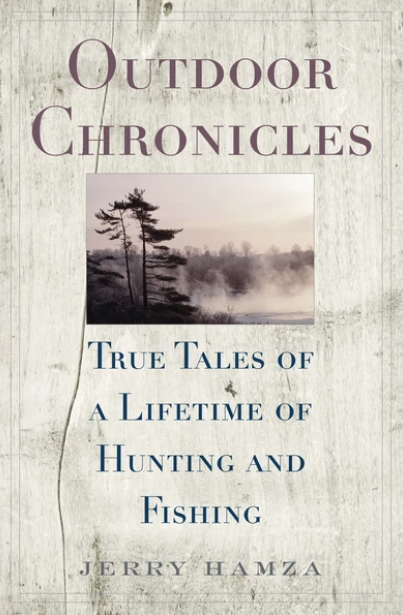 This book is a collection of outdoor stories wrapped in the human condition. They were written with an eye toward honesty and cynicism. They will make you laugh out loud, and you will want to carry them with you wherever you go. If this book goes missing, it’s a sure thing that, when you do find it, it will be in the possession of a member of your household, regardless of their interest in casting a fly. The stories cover the gamut from a fishing trip to northern Canada to a little stream that was actually better than remembered, to how the baby boomers almost trampled a sport to death, to a solitary trek along railroad tracks during a cold, dark, and dreary February, and many more. Buy Now
This book is a collection of outdoor stories wrapped in the human condition. They were written with an eye toward honesty and cynicism. They will make you laugh out loud, and you will want to carry them with you wherever you go. If this book goes missing, it’s a sure thing that, when you do find it, it will be in the possession of a member of your household, regardless of their interest in casting a fly. The stories cover the gamut from a fishing trip to northern Canada to a little stream that was actually better than remembered, to how the baby boomers almost trampled a sport to death, to a solitary trek along railroad tracks during a cold, dark, and dreary February, and many more. Buy Now


